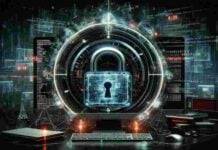
When the LaGuardia airport located in the northern part of New York City witnessed a blackout on December 28th of last month. Officials initially said that the disruption could have been caused by a power surge pushing the airport into the dark for well over 45 minutes and grounding flights for almost 2 hours.
But later when experts took a closer look at the outage which disrupted the Airport operations, they suspect that the transformer explosion could have been caused by a cyber attack.
Yes, in this digital age cyber threats are being termed as sources for triggering asymmetrical warfare as they can cause a lot of damage with very little investment. Since the modern age sophistication can conceal the real actors behind them, it’s hard to find the source and motive of such attacks.
Discussing the same, a New York Times report published in March 2018 claims that Russia could possibly be behind such attacks as they are always looking for inroads into foreign networks to conduct espionage or sabotage, or to trigger an explosion of some kind.
Strengthening this claim is a recent report compiled by Symantec which says a Russian intelligence unit has been assigned the duty to learn on how energy facilities on foreign soils operate and also gain access to operational systems themselves. The researchers from Symantec also claim that the Kremlin based GRU has so far managed to gather all classical info related to power grids operating across the United States and the UK which could potentially pose as a threat in near future.
Researchers from Princeton University who participated at the 27th USENIX Security Symposium practically showcased an experiment on how botnets of high wattage appliances can spell danger to power grids. They explained how hackers could cause compromise IoT appliances by constantly turning them on/off, to create an artificial demand for power, tripping transformers to cause blackouts.
Traditionally speaking, all power grid operators irrespective of their country they operate typically assume that power demands are often predictable.
Like if we take the instance of California, the demand shoots up enormously in the evenings and remains stagnant throughout the night. And then it dips in the mornings till afternoons when the hot sun forces power users to switch on the AC units.
Hackers can tweak this consumption graph by generating artificial demands by hacking and taking control of IoT devices. Therefore a small increase in demand may result in line overloads and failures.
As many of these appliances are being controlled by apps and virtual assistants such as Amazon Echo or Google Home, any cyber crook can take hold of the appliance by compromising the app or digital assistants.
And as the proliferation of IoT electronic appliances is expected to soar in near future, the threat graph will also see a surge on a simultaneous note.
It’s not that easy to take control of the situation from here, until and unless the Trump Administration takes initiative to protect the power grids from sophisticated cyber attacks.
Factually speaking, a lot has changed since Donald Trump has come into power as the 45Th US President. But the irony is that a lot of rules are still on paper and fail to reach the implementation stage due to lack of resources.




















